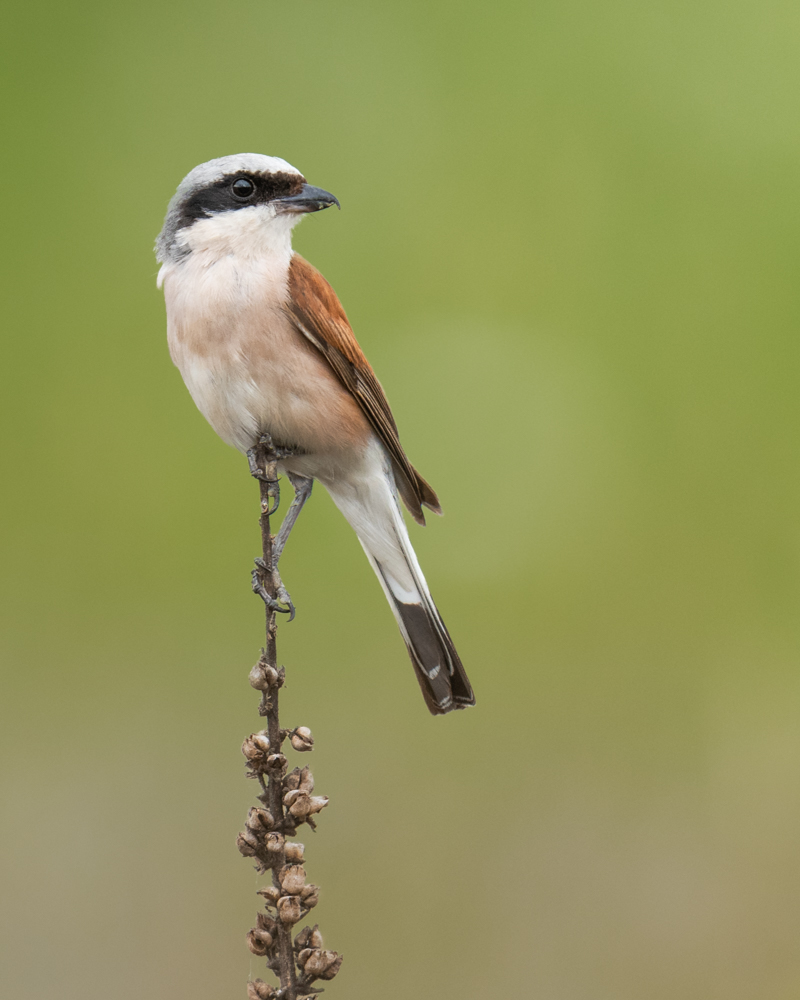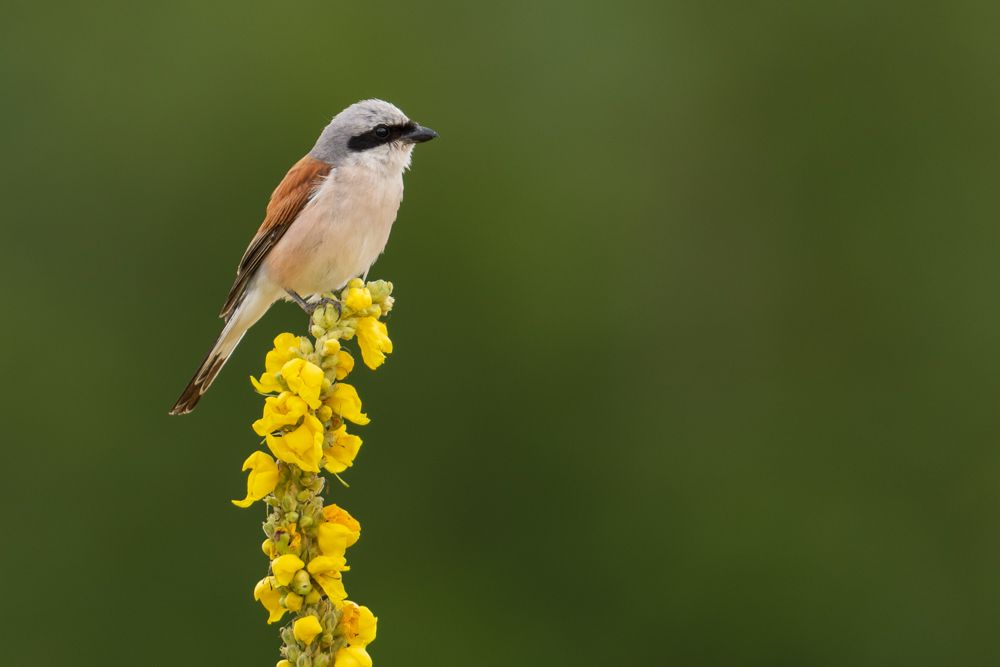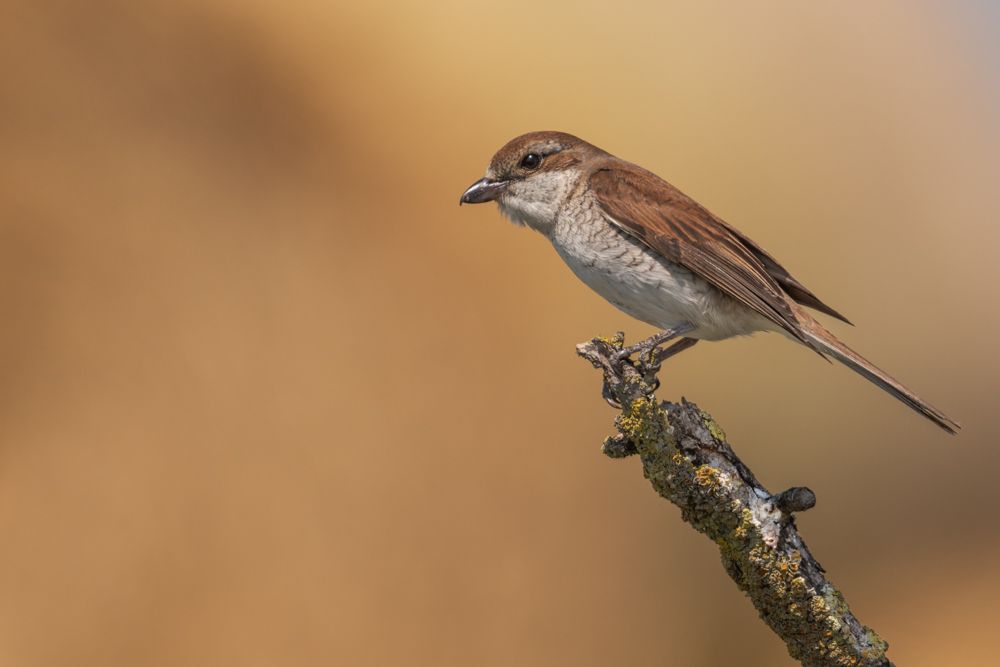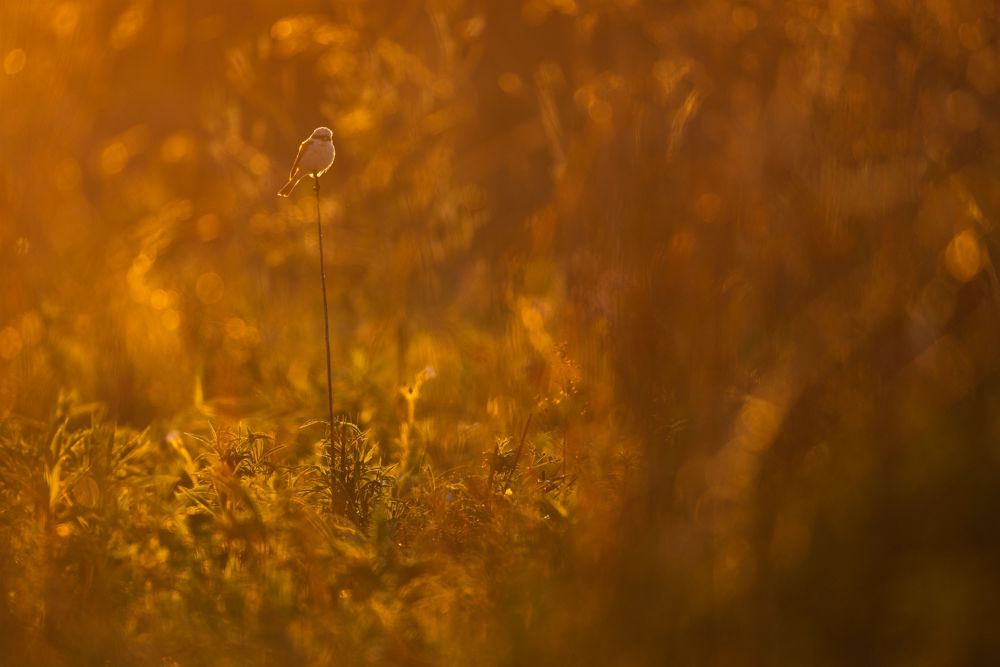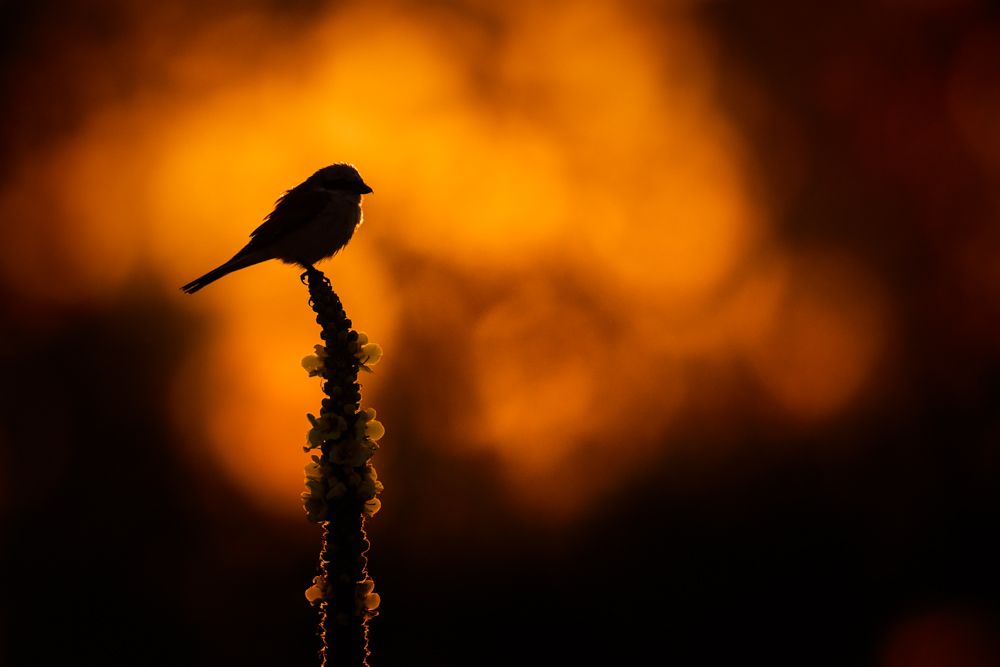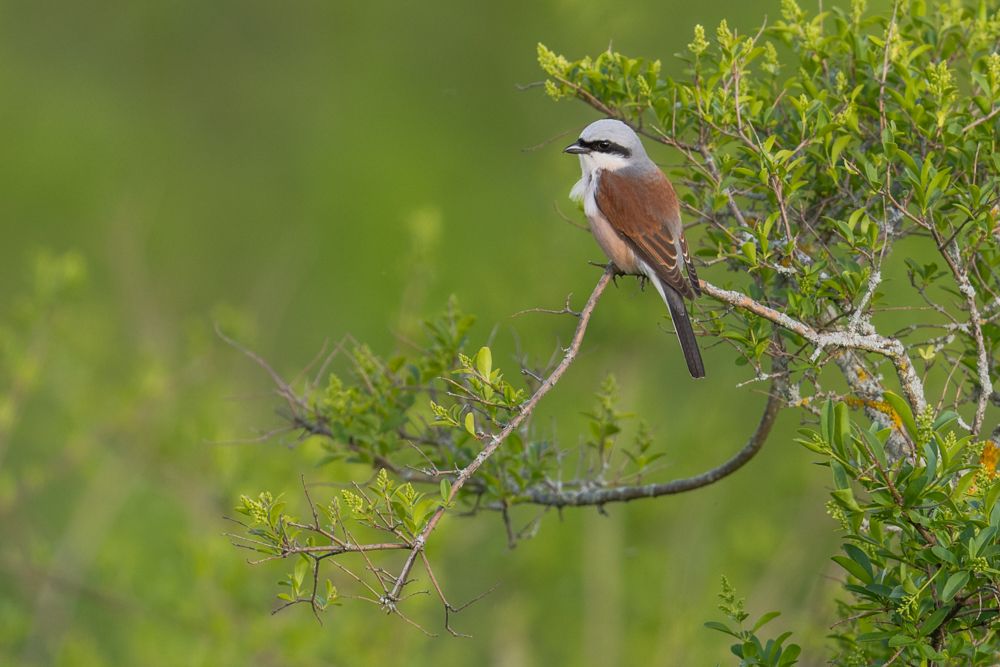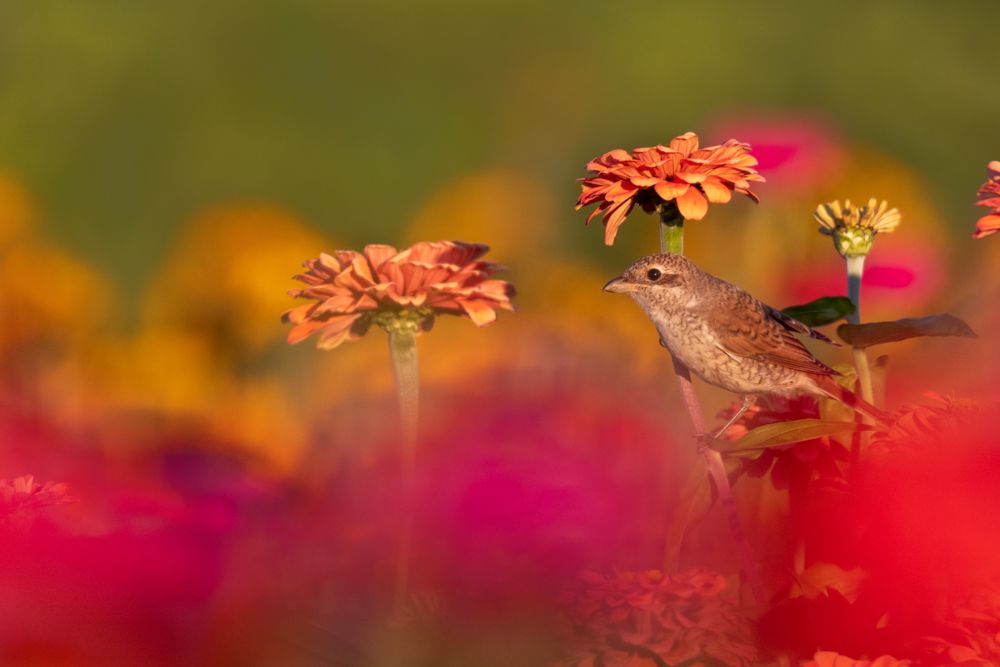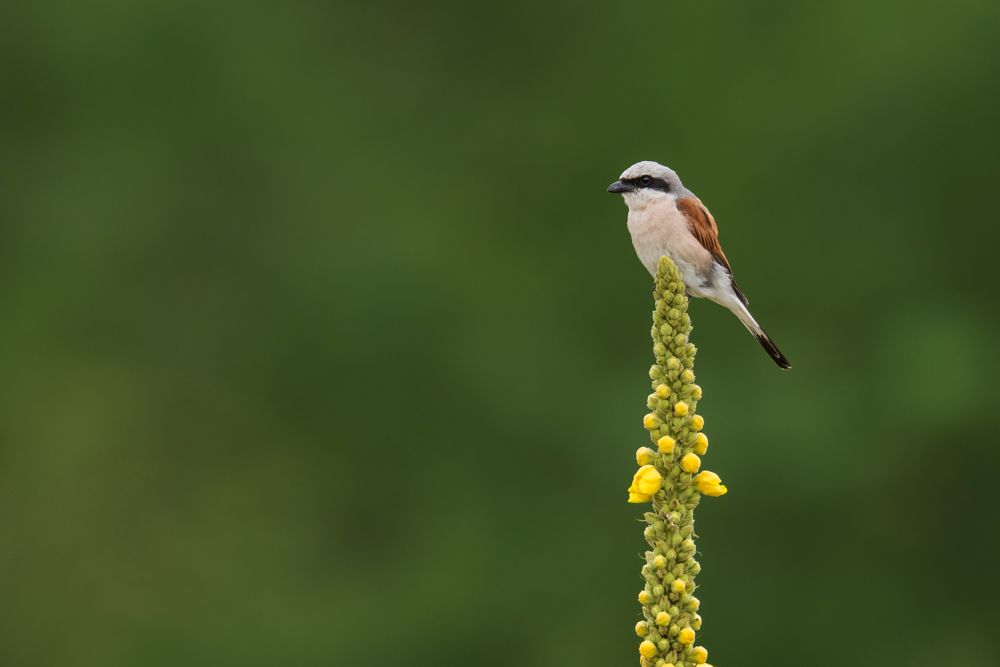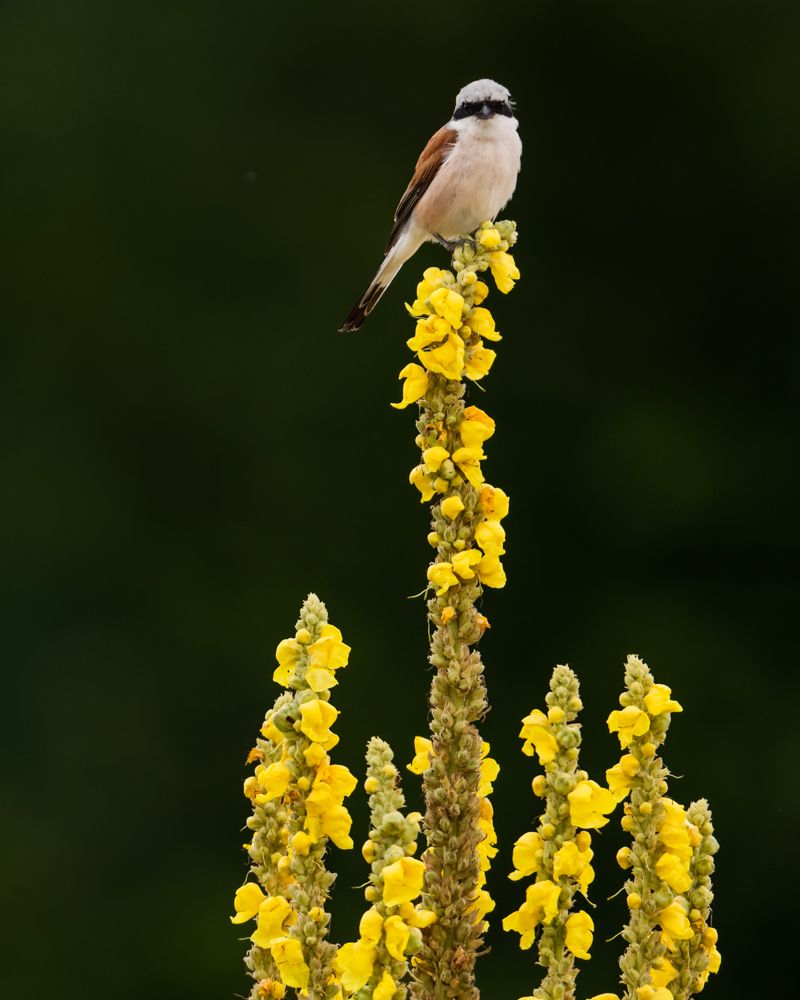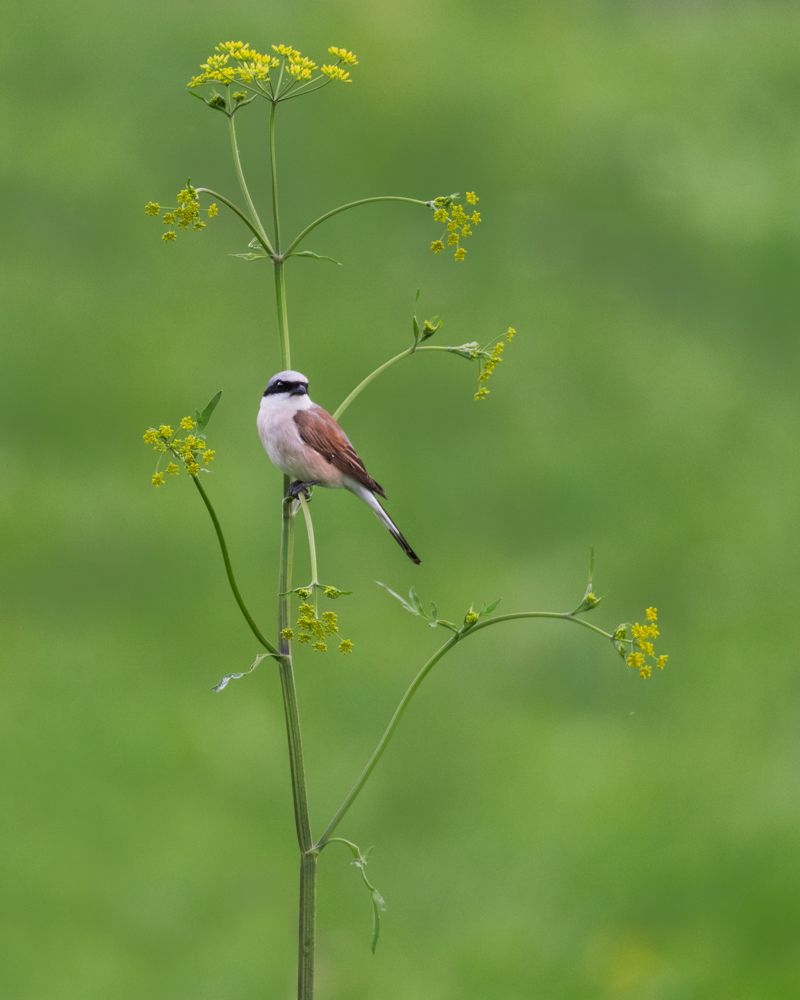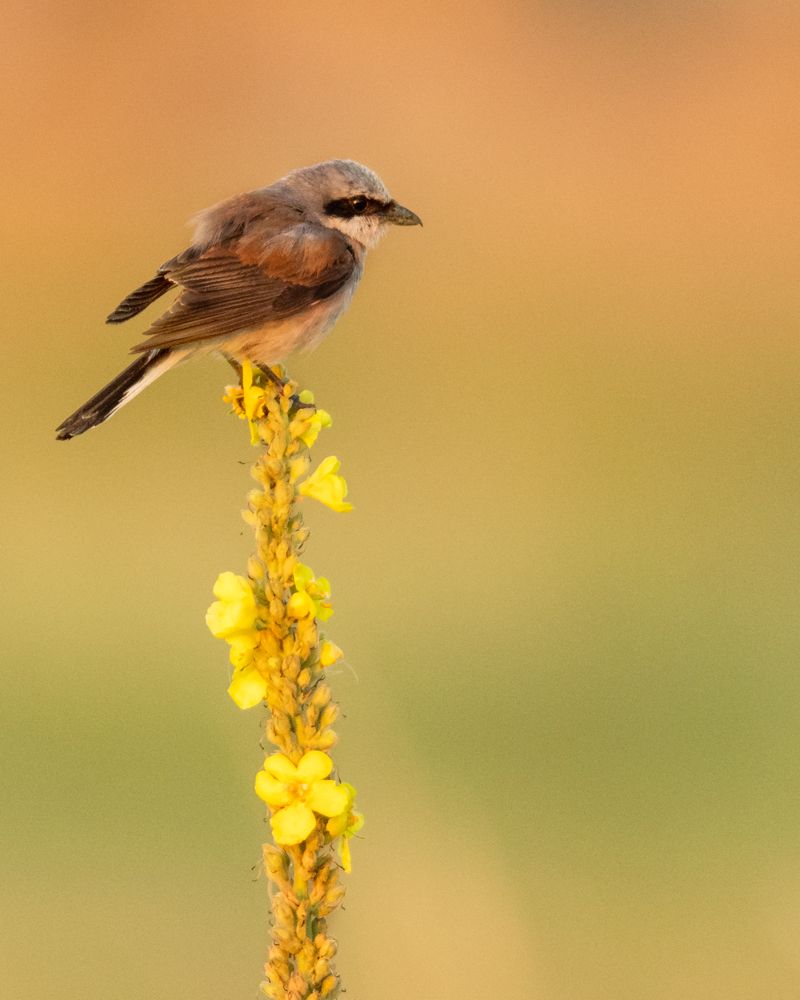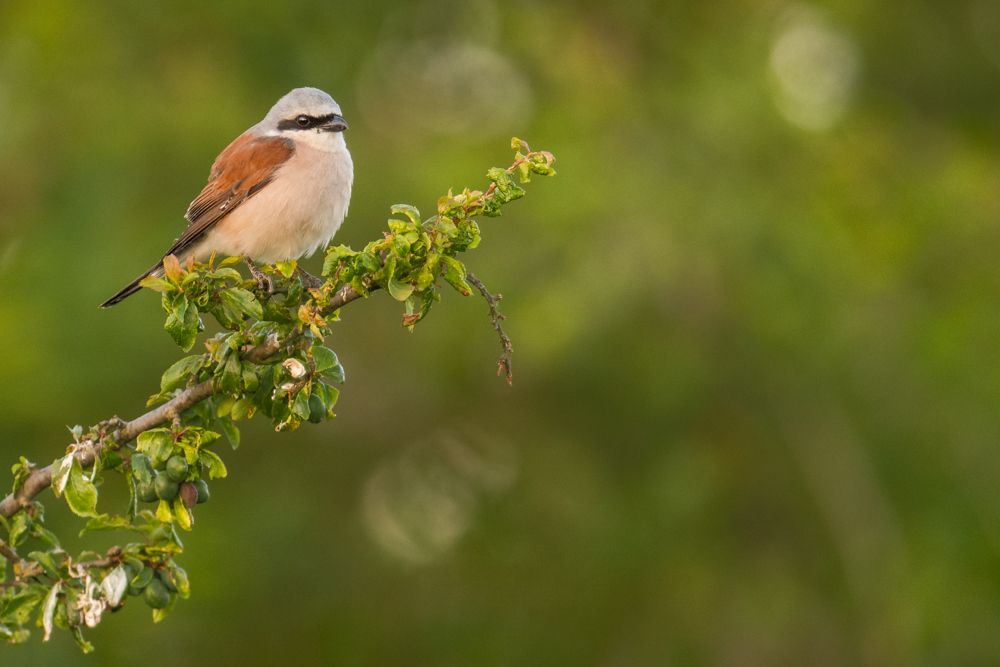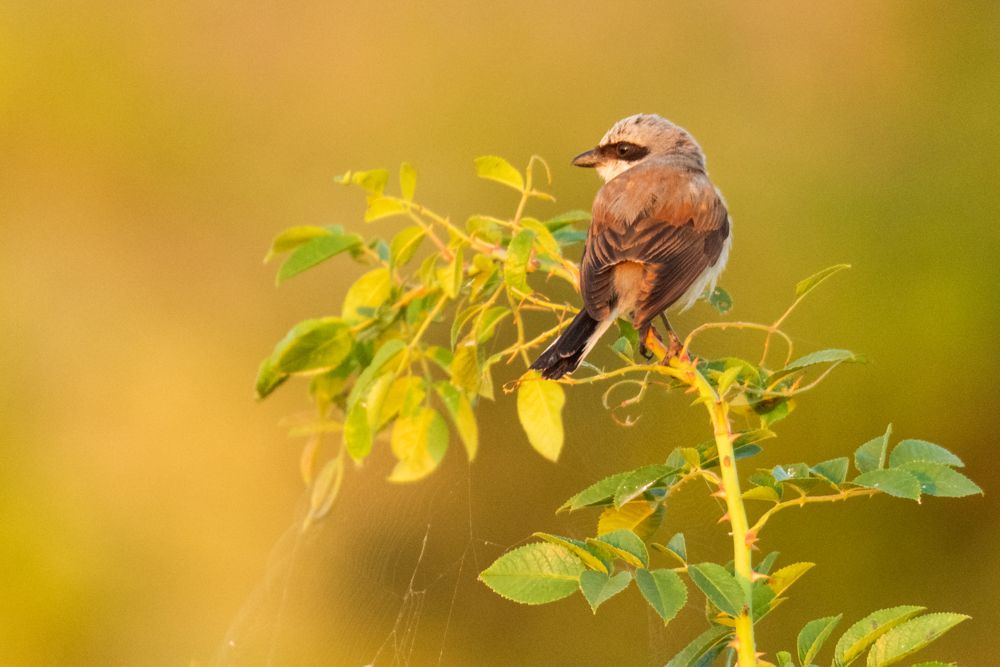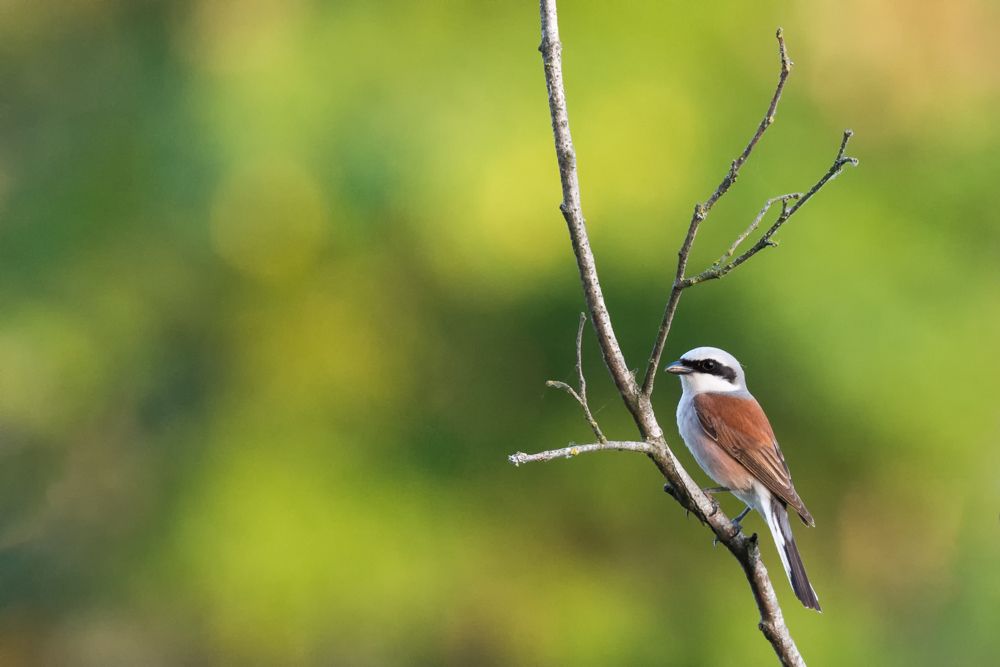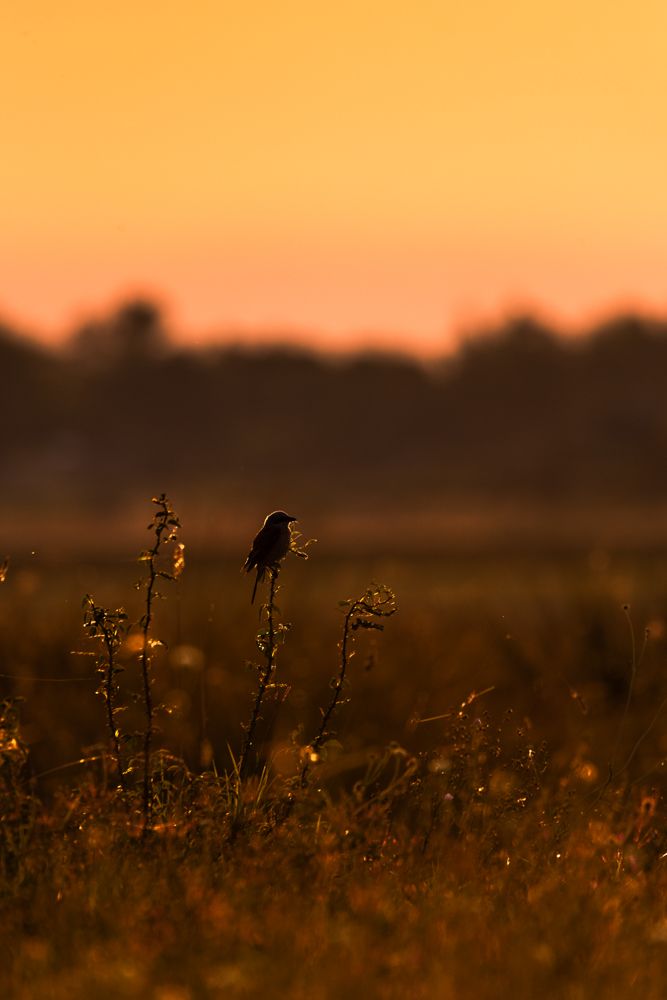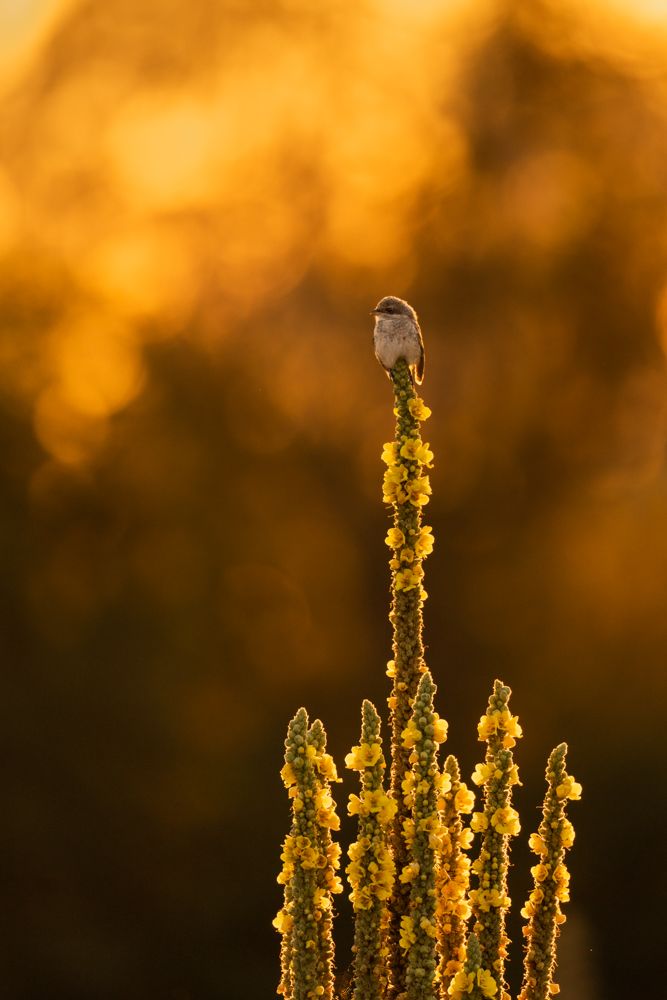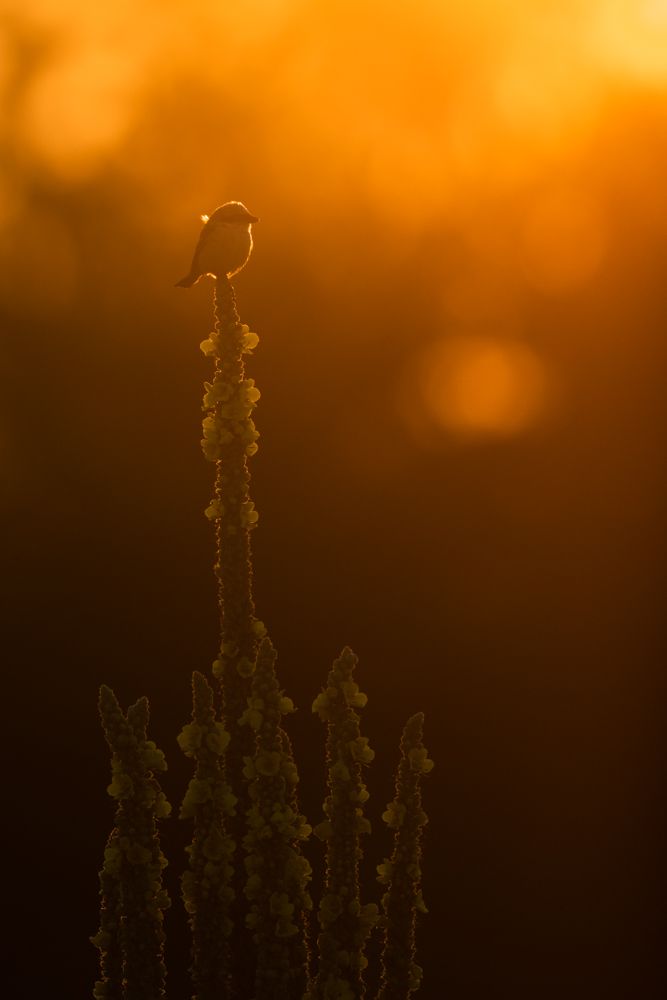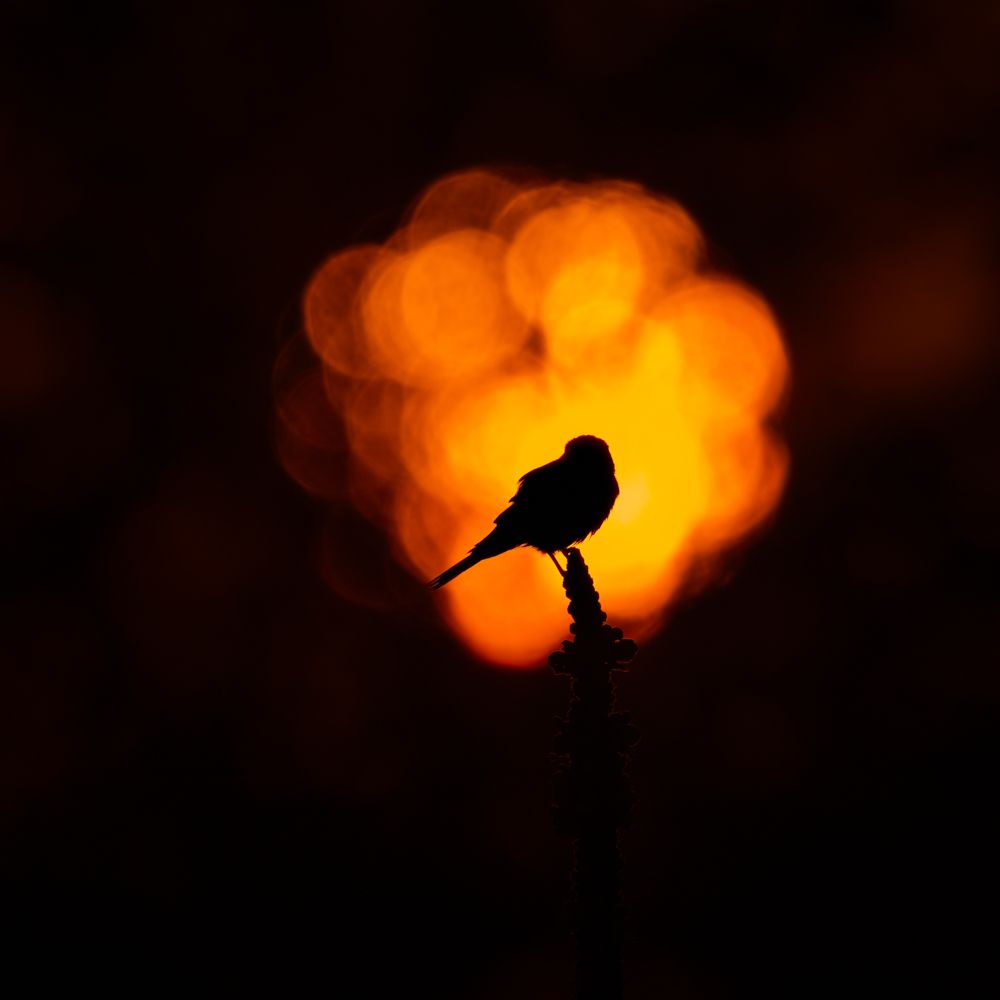Red-backed shrike (Lanius collurio)
The red-backed shrike is a typical inhabitant of cultivated land. Due to the intensification of agriculture, the population of the red-backed shrike has suffered greatly in recent decades. With measures such as hedge planting, it can be assured that this beautiful bird will continue to be a common bird of the Central Plateau.
Profile
Scientific name: Lanius collurio
Class: Birds
Order: passerine birds
Family: Shrikes
Length: 16-18 cm
Wingspan: 24-27 cm
Weight: 21-40 g
Distribution: Europe, East Asia
Breeding population CH: 10'000-15'000 pairs
Habitat: hedgerows, forest edge, cultivated land
Migration: Long-distance migrant
Appearance
With a length of 16-18 cm, the red-backed shrike is slightly larger than a house sparrow. Typical of all shrikes, the red-backed shrike has a fairly broad bill with a protruding top of the bill that curves downward. Males and females show different plumages and can therefore be easily distinguished. Red-backed shrikes, like all other shrike species, do not have breeding or eclipse plumages.
Male red-backed shrikes have a black 'Zorro mask'. The crown and the neck are grey. The back is uniformly brown, while the breast is light beige to light pink. The feet are uniformly grey.
The females are less conspicuously coloured. They do not have a 'Zorro mask', but behind the eyes the females show a brown eye stripe. The head, neck and mantle are uniformly grey-brown in colour. The breast is basically white, but especially the flanks are slightly patterned.
The young birds are similar in appearance to the females. Though the young birds are even more patterned than the females. Especially the crown, the nape as well as the mantle is strongly patterned and serves as a good distinguishing feature.
Risk of confusion
The red-backed shrike is more or less unmistakable. The great grey shrike, a close relative of the red-backed shrike, has some similarities, but can be told apart because of the different observation period. For example, the red-backed shrike can only be observed in Switzerland during the summer months. The great grey shrike is extinct as a breeding bird in Switzerland and can only be observed in Switzerland during the winter. In addition, the great grey shrike is exclusively grey to black in color. The red-backed shrike, on the other hand, also shows shades of brown.
Where does the red-backed shrike live?
The red-backed shrike breeds in Switzerland mainly in cultivated land. Thus, for example, vineyards, fruit orchards with high trunk trees, or fields with surrounding hedges are particularly popular places for the red-backed shrike to breed. In addition to hedges, the Red-backed Shrike needs singing and hunting perches. These can be trees, hedges, telephone lines or plants such as evening primrose.
Distribution in Switzerland
In Switzerland, the red-backed shrike is mainly distributed north of the Alps, in the Ticino and the Alpine valleys. The population of the red-backed shrike in Switzerland is estimated at 10,000-15,000 pairs. The population has been declining since the mid-1990s. In the last couple of years, however, the trend has been slightly positive again. This could have been triggered by protection measures in addition to better climatic conditions in the breeding area.
Due to climate warming, the red-backed shrike has to migrate further south in Africa. The ever longer migration routes are a great challenge for the red-backed shrike and the population development in the coming years is therefore very uncertain.
What does the red-backed shrike eat?
Despite its relatively small size, the red-backed shrike is a bird of prey. Its food - mainly small mammals, large insects but also young birds - the red-backed shrike likes to spear on thorns of e.g. brambles. There the prey is protected from insects and can be eaten in peace.
On the lookout for prey, the red-backed shrike waits on perches a few meters above the ground. From there, the bird then flies to the ground.
Breeding behaviour
The nest of the red-backed shrike is usually located in the middle of dense shrubs. The female lays between 4 and 6 eggs in the nest, at intervals of one egg per day. These are incubated by the female for a good 2 weeks before the young hatch.
Initially, the young are fed exclusively by the male. The female remains in the nest and reduces and distributes the food among the young birds. As the fledglings grow larger, the female goes hunting herself and the young are fed by both parents.
Just 2 weeks after the young have hatched, the young leave the nest. In the following days they continue to be fed by the parents. About 26 days after hatching, the young birds begin to hunt for themselves. And another 10 days later, the young birds gradually become independent.
Migratory behaviour
The red-backed shrike is a distinct migratory bird. Every year the red-backed shrike flies from its breeding area in Europe across the Sahara to East and South Africa. In Switzerland the bird is always one of the last arrivals in spring and one of the first breeding birds to leave. The first red-backed shrikes arrive in Switzerland around the beginning of May. Already at the beginning of September, the red-backed shrikes gradually leave Switzerland again.
How to photograph the red-backed shrike
Depending on the area, red-backed shrikes can be quite trusting. Especially together with young birds, red-backed shrikes are quite easy to photograph. Camouflage is an advantage as almost always, but especially a camouflage tent is not essential.
Evening primroses are very popular with the red-backed shrike for perching. These plants are quite attractive to photograph. So it's worth looking for evening primroses when you see a red-backed shrike. If you wait for the red-backed shrike near such a perch, the chances are very high that the red-backed shrike will pass by there.
Resources
The population figures, length, weight and wingspan correspond to the data of the Vogelwarte Sempach
Information on behaviour, distribution etc. is based on my own observations and was supplemented with information from the following sources:
The Birds of Switzerland (2007) Lionel Maumary et al.
Swiss Breeding Bird Atlas 2013-2016
The Cosmos Bird Guide (2017) Lars Svensson et al.


